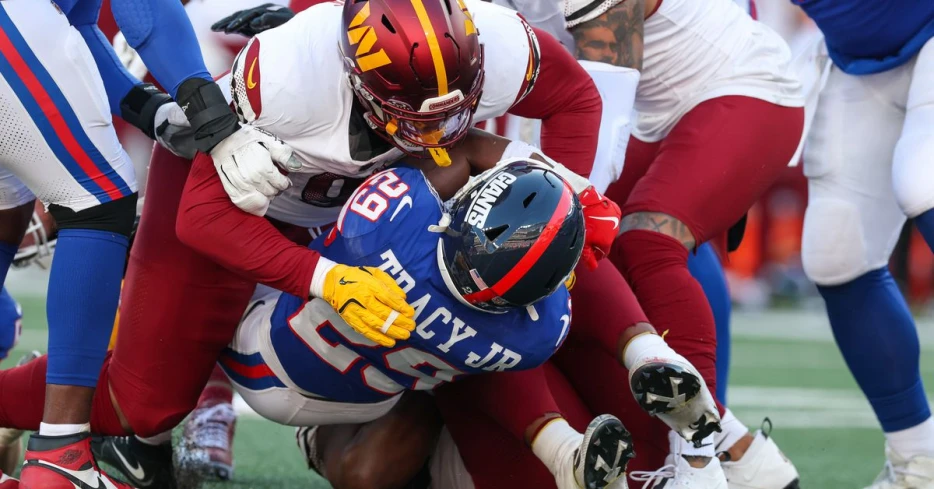
 Hogs Haven
Hogs Haven
Examining the weakest part of Washington’s unexpectedly strong game: Part 3 of 4
As training camp gets underway, anticipation is building to see how the offseason additions and departures might translate to improved play on the field. The defense was the weakest part of the Commanders’ game in the first year of the Peters/Quinn rebuild. So it was no surprise that it received focused attention in free agency and the draft. The DL saw the most activity of any position group in free agency, providing some indication of the urgency the team felt about bolstering the trenches.
Key questions in fans minds, as we start to follow reports from camp, are whether the new additions can replace the production of departing starters Jon Allen and Dante Fowler, whether the run defense will improve, or are they just treading water or even going backward?
This four part series is examining the Commanders’ DL play in 2024, to understand the key weaknesses that needed to improve. The first two articles in the series focussed exclusively on run defense, which was Washington’s worst vulnerability in 2024. However, the pass defense was not actually as strong as the total yardage allowed figure might lead you to believe. Efficiency metrics, which correct for differences in numbers of attempts, showed the passing defense to be closer to middle of the pack or slightly below average.
This article will therefore extend the analysis to include the pass rush, while maintaining the emphasis on the run defense.
The first article revealed a key weakness in defending runs around the left end (right end of the DL), which opponents exploited for disproportionate yardage gains. The run defense was particularly strong on the opposite end. Run defense on the interior was mediocre, overall, with the left side of the DL being stronger than the right side.
The second article examined where individual players line up and how that related to the strengths and weaknesses in run defense. The results point toward DE Dorance Armstrong and DT Daron Payne as likely being the strongest run defenders on the DL, and to DE Clelin Ferrell as possibly being the weak link in the starting lineup.
However, this type of coarse correlational approach has a huge amount of slop to it, and doesn’t take into account other likely contributing factors, such as defensive scheme, and the role of linebackers. Also, the DL is highly rotational. With the lone exception of Clelin Ferrel at RDE, no player manned the same position on the field for more than 50% of defensive snaps, making it challenging to isolate individual player contributions. Consequently the findings are, at best, only indicative of possible strengths and weaknesses.
To get a firmer handle on how things might change on the DL, this article takes a look at the past performance of the Commanders’ returning, departing and new interior defensive linemen at stopping the run and rushing the passer. The final article concludes the series by taking a similar look at...